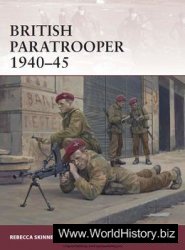Social position, gender, geographic location, religion, and other factors all infl uenced
one’s chances of ever joining the community of scholars or artists, beginning with the
very fi rst steps, learning to read and write. It is often diffi cult to fi nd much information
about basic education, as children were taught by their own parents or by neighbors
who could read, a process that left no trace in any record. Older women in many villages
and towns ran small “cranny schools” which combined child care with teaching
young children their letters and the recitation of Bible verses or psalms. Parish records
from parts of France and England refer to village schools that taught reading, writing,
singing the liturgy, and some arithmetic; in Italian cities, men taught middle- and
working-class boys reading, writing, bookkeeping, and accounting in abbaco schools.
Church ordinances in parts of Spain from the late fi fteenth century ordered priests
and sacristans to teach reading and writing, and fathers to send at least one son for
such studies, but there are few records about how well these aims were realized. Jewish
children learned the Hebrew letters and texts of basic prayers at home, and then might
attend a school organized by the synagogue to study the Torah and other books of
Hebrew Scripture in Hebrew and the vernacular. In the towns of the Ottoman Empire,
schools established by private individuals or religious organizations taught boys, and
occasionally girls, to read, write, and recite the Qur’an.
In the sixteenth century, Protestant reformers called for the opening of schools to
teach reading in the vernacular and inculcate proper religious values, but this process
proceeded more slowly than they hoped. There were more than a hundred different
ordinances regulating the curriculum, hours, and structure of schools in the cities and
states of Germany by 1600, but ordinances were often issued well before many schools
were opened. By 1580, in the province of Electoral Saxony in central Germany, only
50 percent of the parishes had licensed German-language schools for boys, and 10 percent
for girls; licenses to teach from England at about the same time indicate that some
dioceses had English-language elementary schools in about half of their parishes. By
1675 in Electoral Saxony the numbers had increased to 94 percent for boys and 40 percent
for girls. Those numbers are quite large, but it is important to remember that children
did not attend such schools for the whole day, or for very long; boys often went
for half a day for three or four years, and girls for an hour or so a day for one to two
years. The level of literacy achieved was thus not very high. Though reformers regarded
separate schools for girls and boys as the best organization, this was generally not feasible
in smaller towns, and children attended mixed-sex schools. In larger towns and
cities, girls and boys were separated, with the girls taught by female schoolmistresses
and the boys by schoolmasters, both paid through a combination of student fees and
salary; in Antwerp in 1576 there were seventy licensed schoolmistresses and eightyeight
schoolmasters. Boys who had mastered reading in the vernacular might start
basic Latin training, while girls were taught sewing and embroidery; all children
received a very heavy dose of religious instruction, with readings from religious texts,
hymn-singing, worship services, and prayer part of the daily curriculum.
Catholic reformers also called for instruction in basic Christian doctrine, and informal
catechism schools that taught reading and writing along with memorization
developed in Italy and Spain; those for boys were staffed by men and those for girls
by women. Many of these met for only two hours on Sundays and religious holidays,
but they were able to get across the basics of literacy to at least some of their pupils;
in 1550 in the Spanish dioceses of Toledo and Cuenca, about half the men brought up
for questioning before the Inquisition could read in Spanish. Some of these “colleges
of children of the doctrine,” as they were called in Spain, were specifi cally established
for orphaned or poor boys, who were thought to be especially at risk of never learning
proper religious or moral values.
Though we now teach reading and writing at the same time, during the early modern
period children were taught to read before they were taught to write. In part this
was a fi nancial matter, as learning to read required fewer resources than learning to
write – one slate or hornbook for teaching basic letters and a few psalters or saints’
lives or parts of the Bible for mastering whole words and sentences, as compared
with many slates and then paper and ink and pens for writing. In part this was also a
philosophical issue, for political and religious authorities regarded the most important
function of education as teaching children the ideas of others, not having them
express their own.
The fact that people learned to read without learning to write makes measuring
exact levels of literacy very diffi cult, for the ability to sign one’s name is often taken
as the basic indication of literacy. In East Anglia, in eastern England, for example,
49 percent of male tradesmen and craftsmen and 6 percent of women in the decade
of the 1580s could sign their names, proportions that had only risen to 56 percent and
16 percent in the 1680s. From other types of sources, however, such as wills and the
inventories taken at death, we know that the proportion of people who could read was
much higher, but there is no way of arriving at exact fi gures. The safest generalization
is that literacy levels were highest among the urban upper classes of northwestern Europe,
and lowest among the rural peasantry of south and east Europe, and that they
slowly increased from 1450 to 1750. By 1750 almost all upper-class men and women
could read, but still only a small minority of male or female peasants could. The greatest
gap between male and female literacy was in the middle of the social scale; by 1750
in many cities of Europe the majority of male artisans could both read and write,
but their wives and sisters could not. Parish registers, marriage contracts, and wills
throughout the early modern period generally reveal that about twice as many men as
women from similar social classes could sign their names, and that the women’s signatures
are more poorly written than the men’s, so that their names might have been the
only thing these women ever wrote.
Once a Christian boy had learned to read and write in the vernacular, or even before
that if his parents were wealthy and the opportunity was available, he might be sent to a
Latin grammar school, or to a college or academy that offered many years of education.
As noted in chapter 1 , during the Middle Ages secondary and higher education was
largely controlled by the church, but by 1450 rulers and city governments had begun to
support secular schools and academies. This process continued in the sixteenth century,
with cities hiring and licensing schoolmasters and determining the subjects taught.
Along with Latin grammar, rhetoric, and dialectic, boys might be offered Greek, natural
philosophy, modern foreign languages, and arithmetic; some schools used medieval
texts, while others adopted a more humanist curriculum centered on classical Latin
works such as those of Cicero, Quintilian, Terence, and Julius Caesar. Grammar schools
and colleges produced the literate notaries, secretaries, and offi cials needed by expanding
national and local governments; they were supported by powerful patrons, who
expected them to train their sons in moral values and civic leadership as well as in the
more practical skills of rhetoric and mathematics.
Protestant reformers supported these Latin schools, and they became the training
ground for pastors and other church offi cials. In England, Latin grammar schools
were established with private and royal funding; historians estimate that there may
have been as many as 400 grammar schools in England by 1500, and another 400
opened in the century after that. In Protestant parts of France and Switzerland,
schools modeled on the college established in 1559 by the reformer John Calvin in
Geneva taught the Geneva catechism along with Latin grammar. In Catholic areas
the church often objected to municipal schools, and sometimes accused teachers of
heresy, but in the early sixteenth century cities paid little attention to such charges.
By the later sixteenth century, members of the new religious orders that began as part
of the Catholic Reformation decided that the best way to shape education was not to
protest municipal schools, but instead to staff them. Grammar and secondary schools
in France, Spain, Poland, and other Catholic areas were increasingly staffed by Jesuits
or members of other religious orders, who also opened their own colleges. By 1556,
the Jesuits were running thirty-three colleges in seven European countries, and by
1600 there was a Jesuit college in nearly every city and town in Spain, which offered
free instruction for boys in Latin grammar, philosophy, theology, geography, religious
doctrine, and history. These trained clergy as well as laymen, for an important aim of
Catholic reformers was improved clerical education. Several female orders, particularly
the Angelicals and the Ursulines, ran schools for girls, though these were generally
within convents after the middle of the sixteenth century, when the Council of
Trent reinforced the requirement that all female religious be cloistered. In Protestant
areas, education for girls beyond basic literacy in the vernacular was available only
through private tutors.
Latin grammar schools and colleges were generally open only to Christians, with
even converted Jews forbidden to teach in Spain in 1573. Jews in some areas established
separate secondary schools for boys, which taught Latin and arithmetic as well as
Hebrew and doctrine. Boys seeking more intensive religious training could attend a
yeshiva, where they studied the Talmud and other texts; yeshiva studies often lasted
many years, and centered on formal discussions and disputations. In the Ottoman
Empire, as elsewhere in the Muslim world, colleges ( madrasas ) attached to mosques
trained legal scholars, muftis (jurists who gave authoritative opinions – fatwas – on
legal questions), and judges in Islamic law and tradition. Arabic was the language of
religious law and Persian the language of elevated literature throughout the Muslim
world, so that, as in Christian Europe, highly educated people across a wide area
shared a common language. The most prestigious colleges, where professors received
the highest salaries, were those established in Istanbul by Sultans Mehmed II and
Süleyman I, whose graduates hoped for careers in the sultan’s household or as
military judges.
Universities offered the highest level of education in Christian Europe, and by the
early sixteenth century there were over fi fty universities in Europe; more were established
in the century that followed as Christian national and territorial rulers, like the
Ottoman sultans, increasingly saw a need for educated offi cials and regarded founding
universities as part of a ruler’s job. Italian universities, such as those at Bologna and
Padua, focused on law and medicine, drawing students from all over Europe. Paris had
the most renowned theological faculty. Students at Italian universities were generally
young men who had already mastered Latin in an academy or college. Students at
northern European universities such as Paris and Oxford included teenage boys studying
for a bachelor’s degree; they often lived in residential colleges endowed by private
donors under the supervision of teachers with master’s degrees. Paris and Salamanca
were the largest universities in Europe, with thousands of students; most universities
were much smaller, with several hundred students coming largely from the surrounding
area and thirty or forty professors.




 World History
World History









